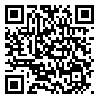BibTeX | RIS | EndNote | Medlars | ProCite | Reference Manager | RefWorks
Send citation to:
URL: http://journal.muq.ac.ir/article-1-435-en.html
2- Faculty of Veterinary Medicine, Urmia University ,
Background and Objectives: Aflatoxin B1 (AFB1) is a mycotoxin, which is produced by Aspergillus flavus and Aspergillus parasiticus. Among four types of AFB (AFB1, AFB2, AFB3, and AFN4), AFB1 is the most abundant and toxic in the world. Aflatoxin decreases sperm production and quality. In the present study, the effect of ABF1 was investigated on spermatogenesis, spermiogenesis, and cell apoptosis in the testicular tissue.
Methods: In this experimental study, 24 albino mice were divided into 4 groups; control group intraperitoneally received 0.2 ml corn oil and experimental groups received AFB1 (20 µg) for 7, 15, and 35 days, respectively. After 7, 15 and 35 days, the testicular tissue samples were taken, and after preparing tissue sections, hematoxylin and eosin (H&E) staining was performed. Histomorphometric parameters and DNA damage was evaluated using DNA Ladder method. Data analysis was carried out using one-way ANOVA at the significance level of p<0.05.
Results: In this study, AFB1 led to tissue damage, especially in germ cells line. The percentage of seminiferous tubules with differentiation indices, tubular repopulation, and negative spermiogenesis, increased in the mice received AFB1; seminiferous tubules diameter and germinal epithelium thickness, significantly decreased (p<0.05). Finally, AFB1 increased the DNA damages.
Conclusion: The findings of this study revealed that AFB1 increases testicular cell apoptosis via DNA damages, also it can increase differentiation indices, tubular differentiation, and spermiogenesis in testicular tissue, which consequently lead to decrease in sperm production and quality.
Received: 2016/03/12 | Accepted: 2016/03/15 | Published: 2017/03/14
| Rights and permissions | |
 |
This work is licensed under a Creative Commons Attribution-NonCommercial 4.0 International License. |






